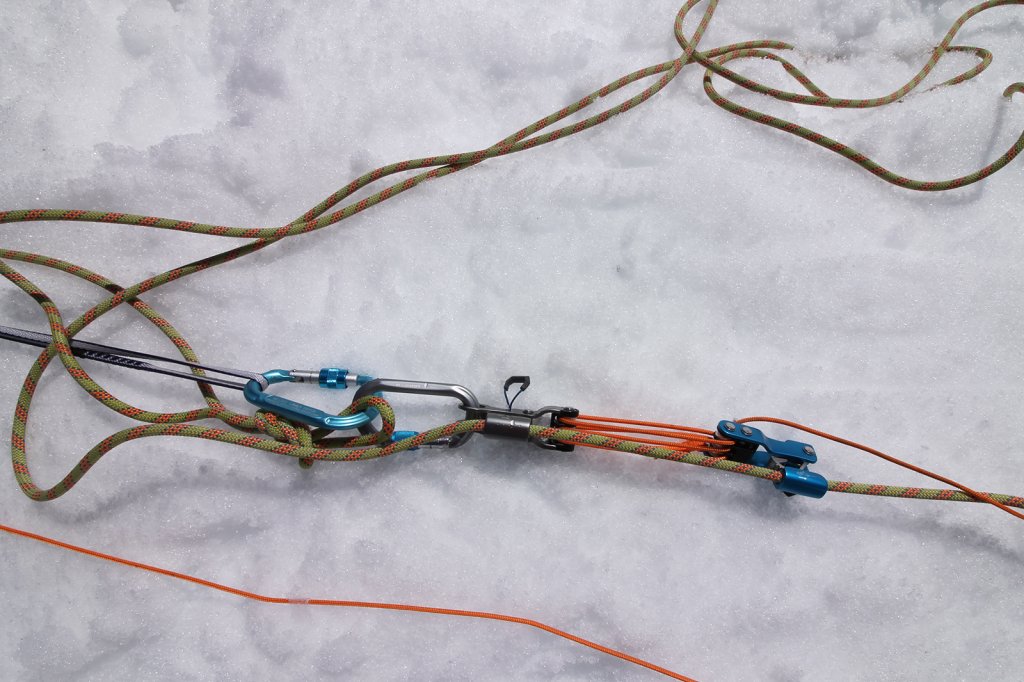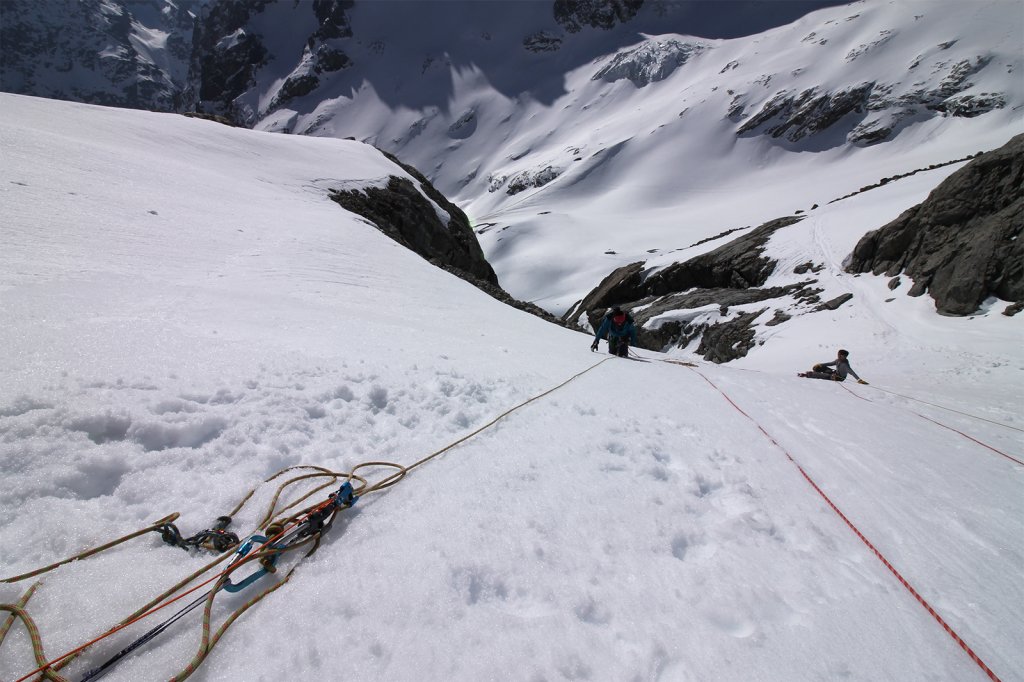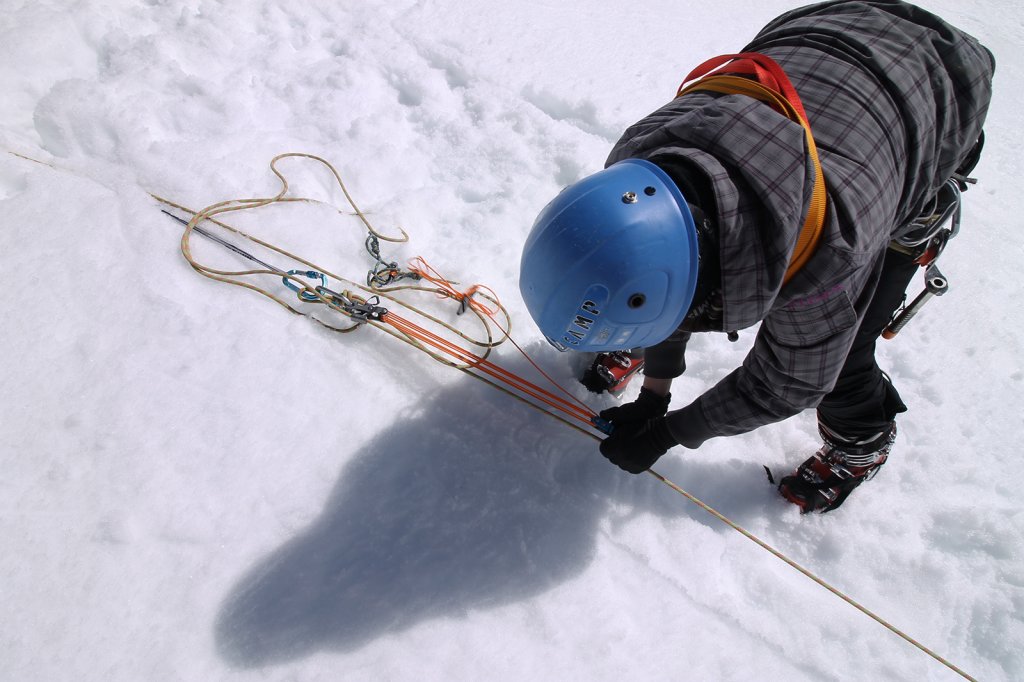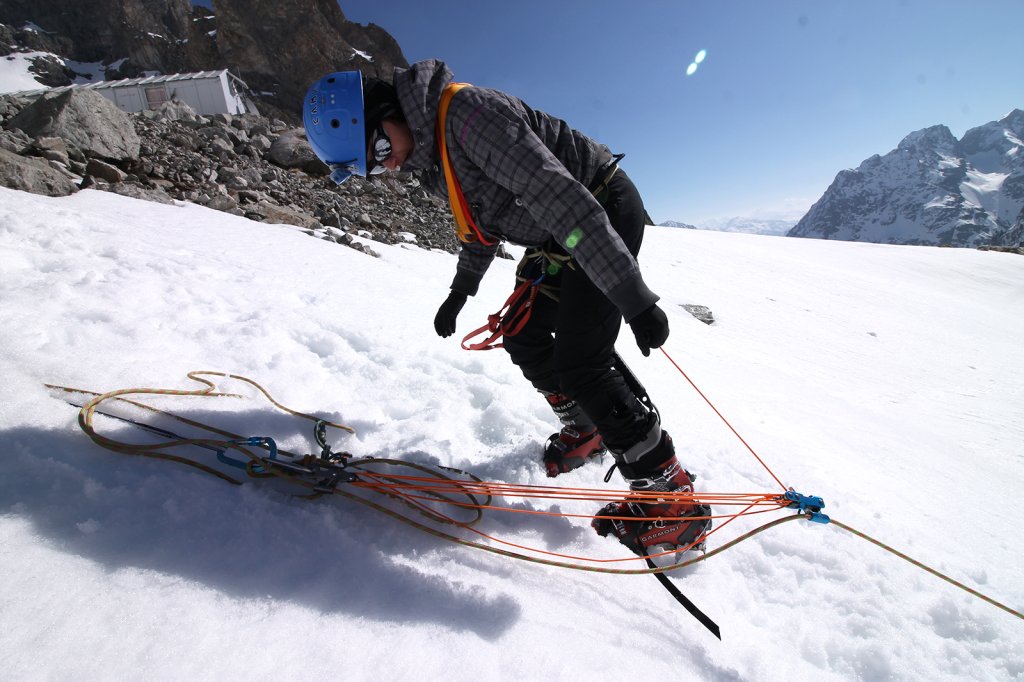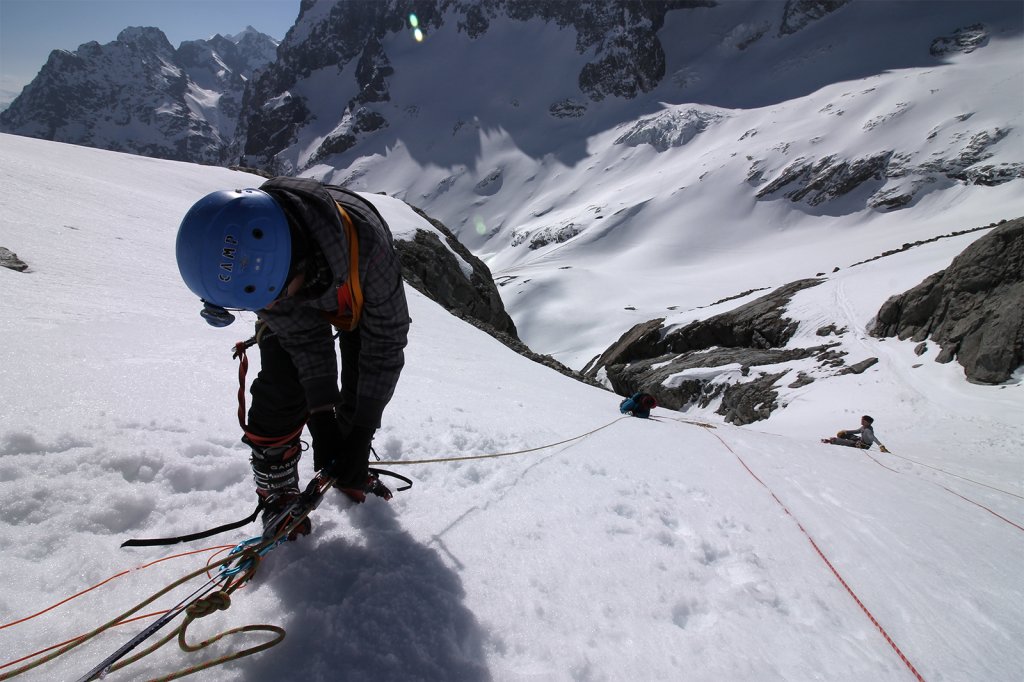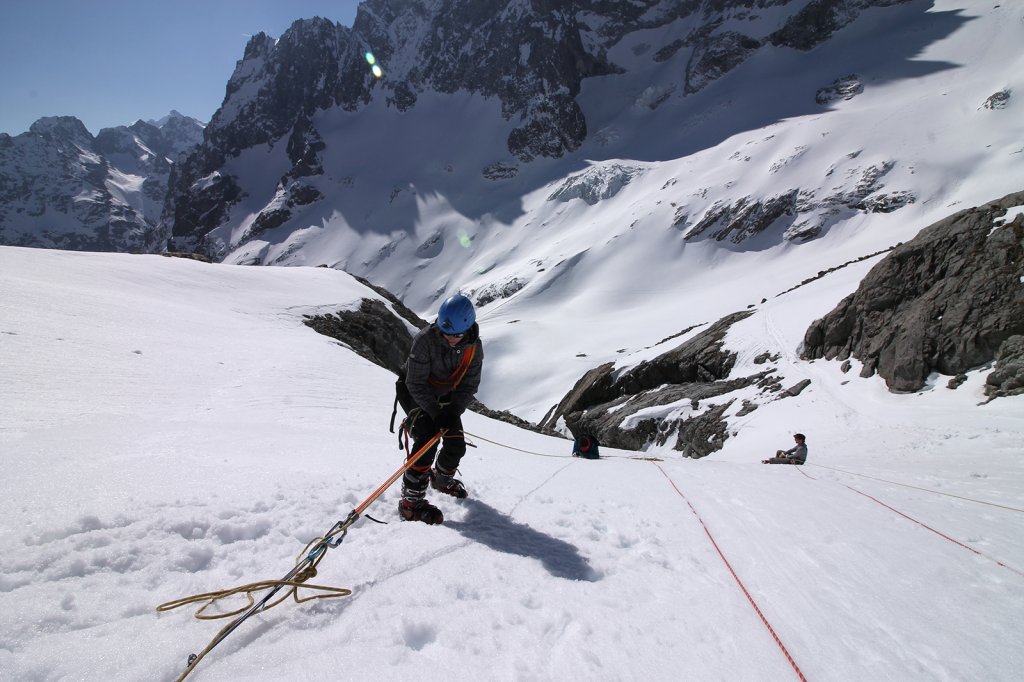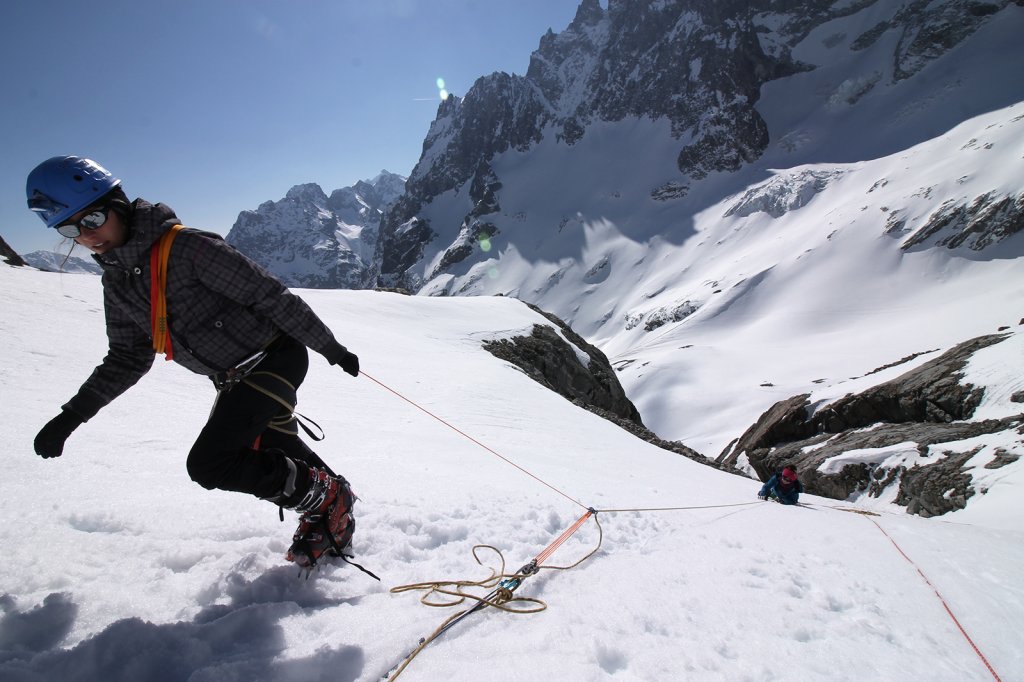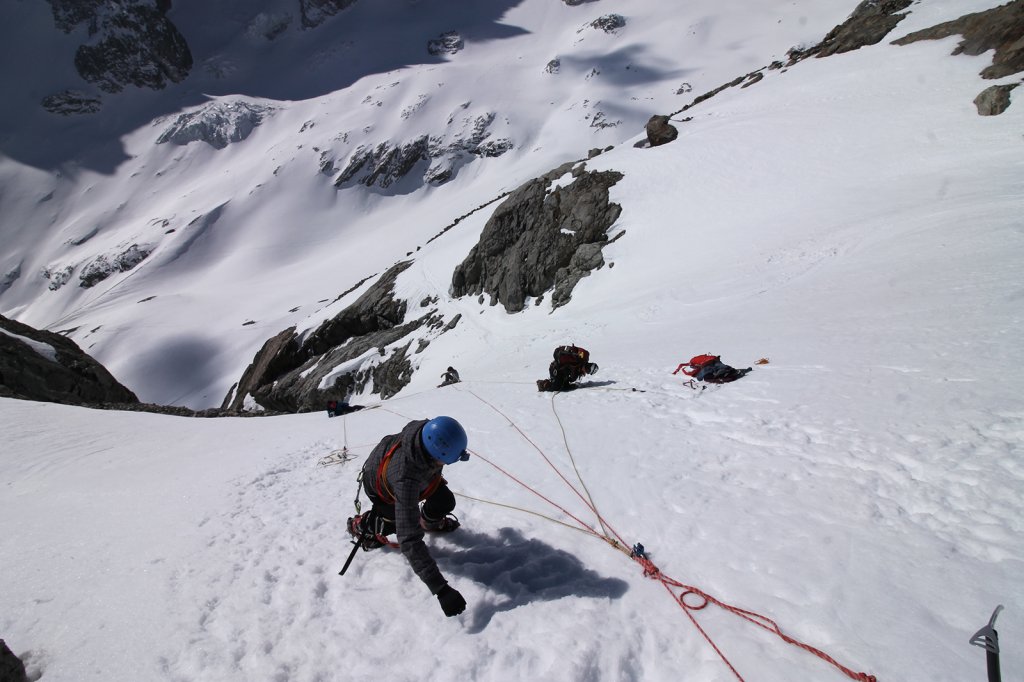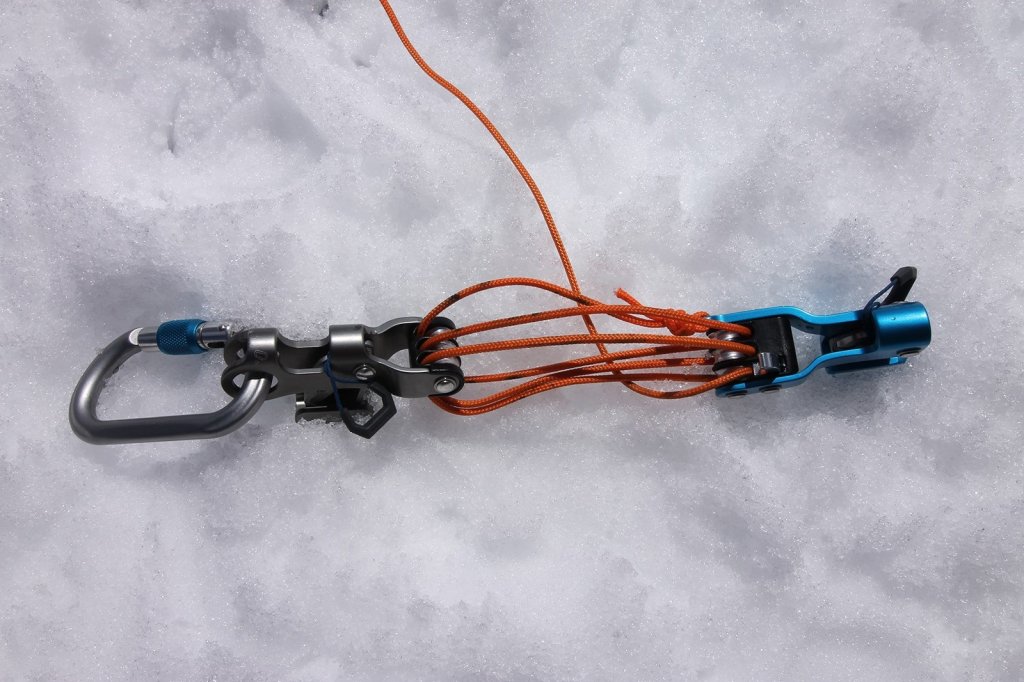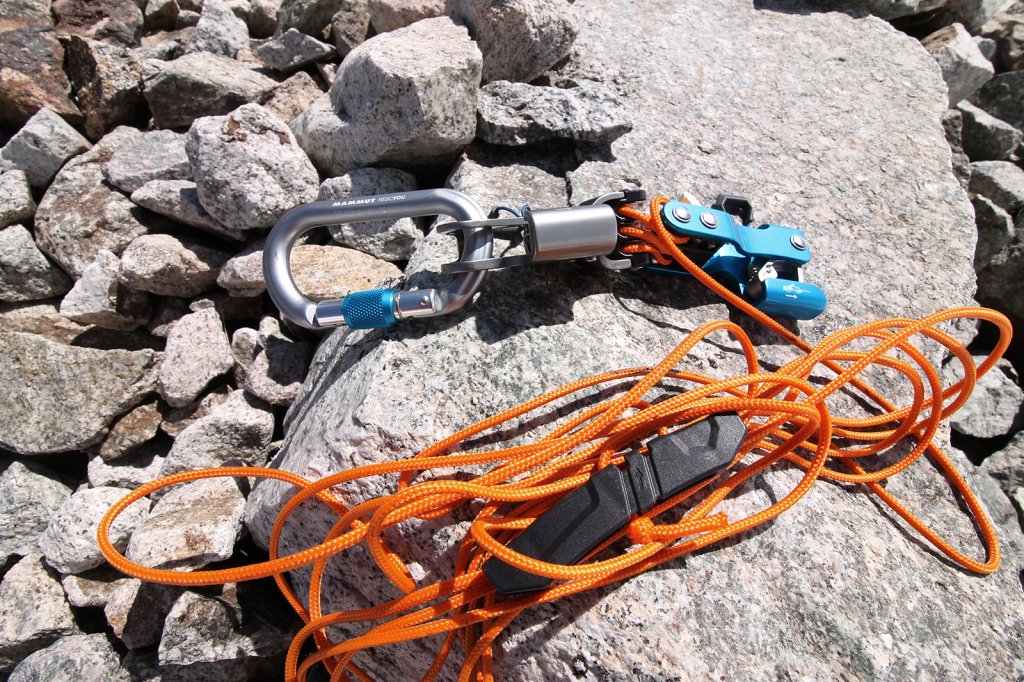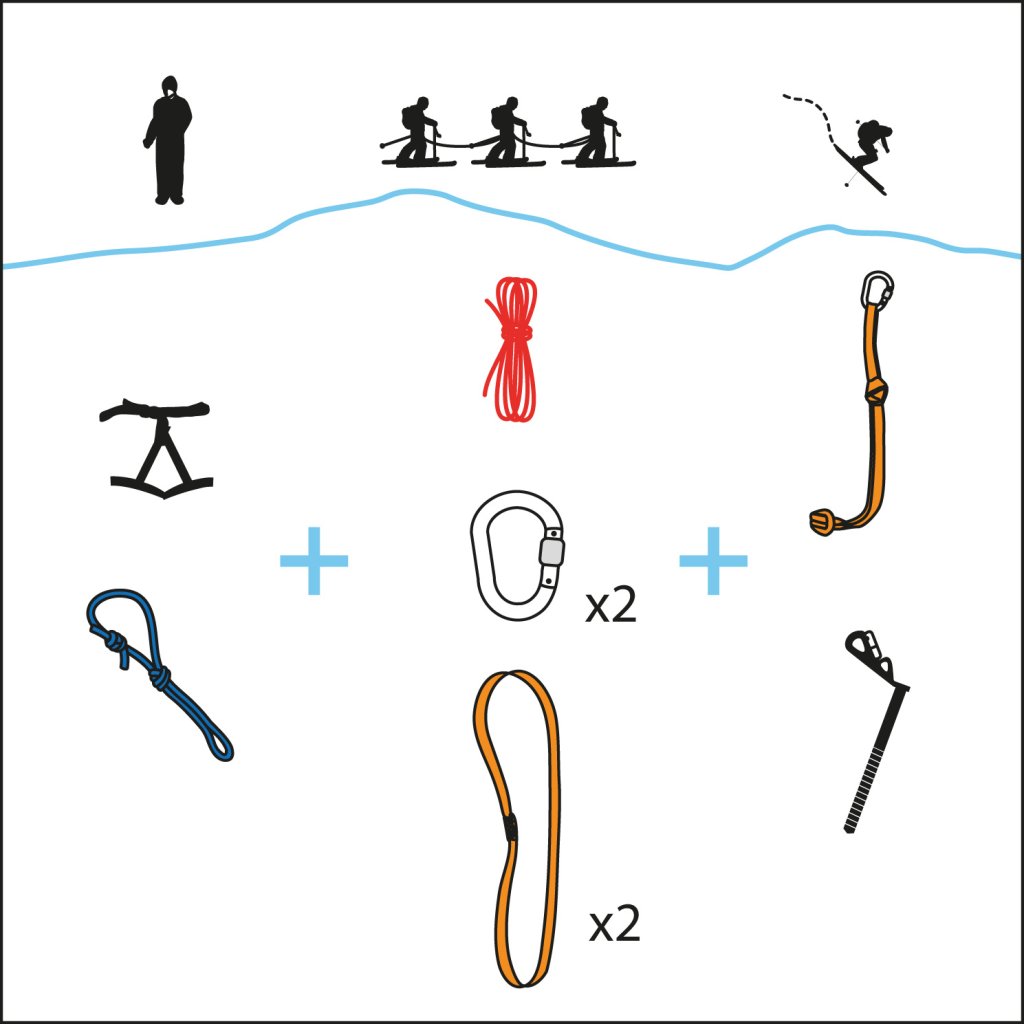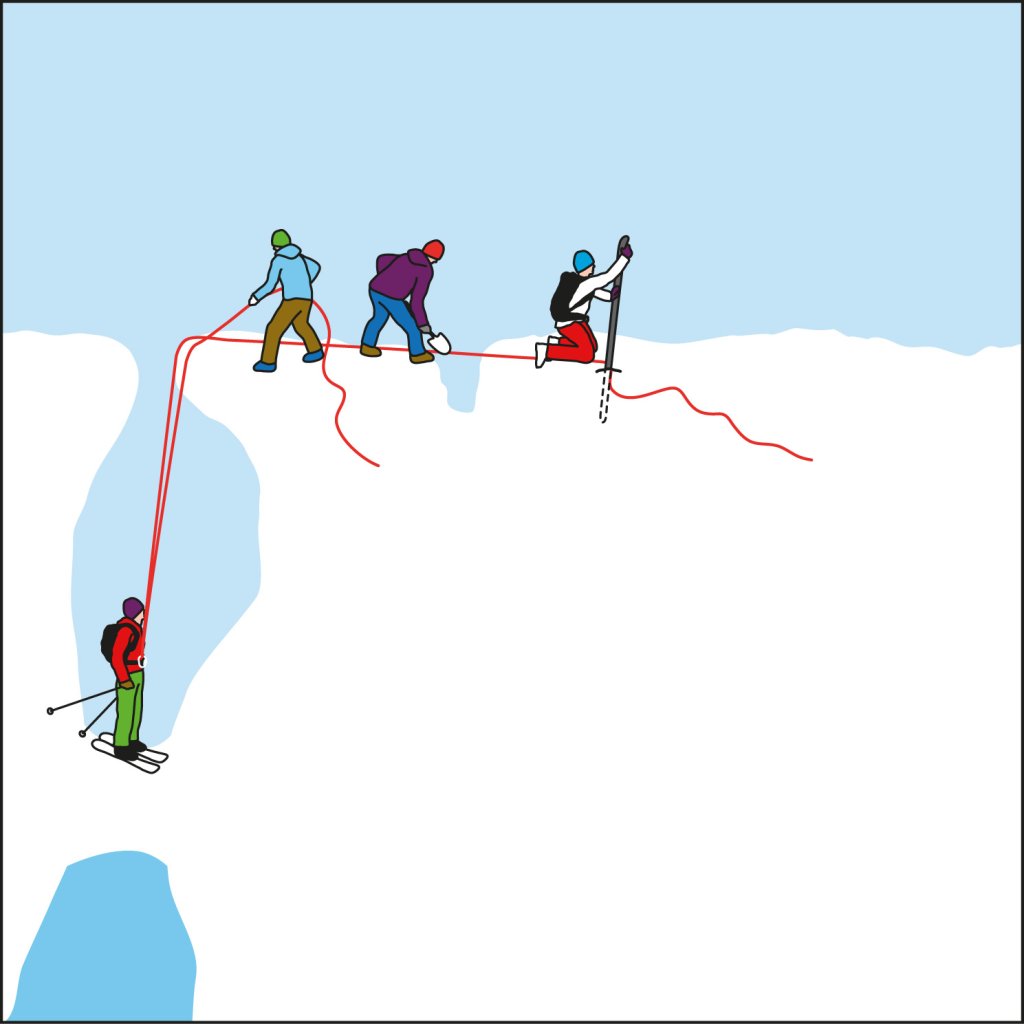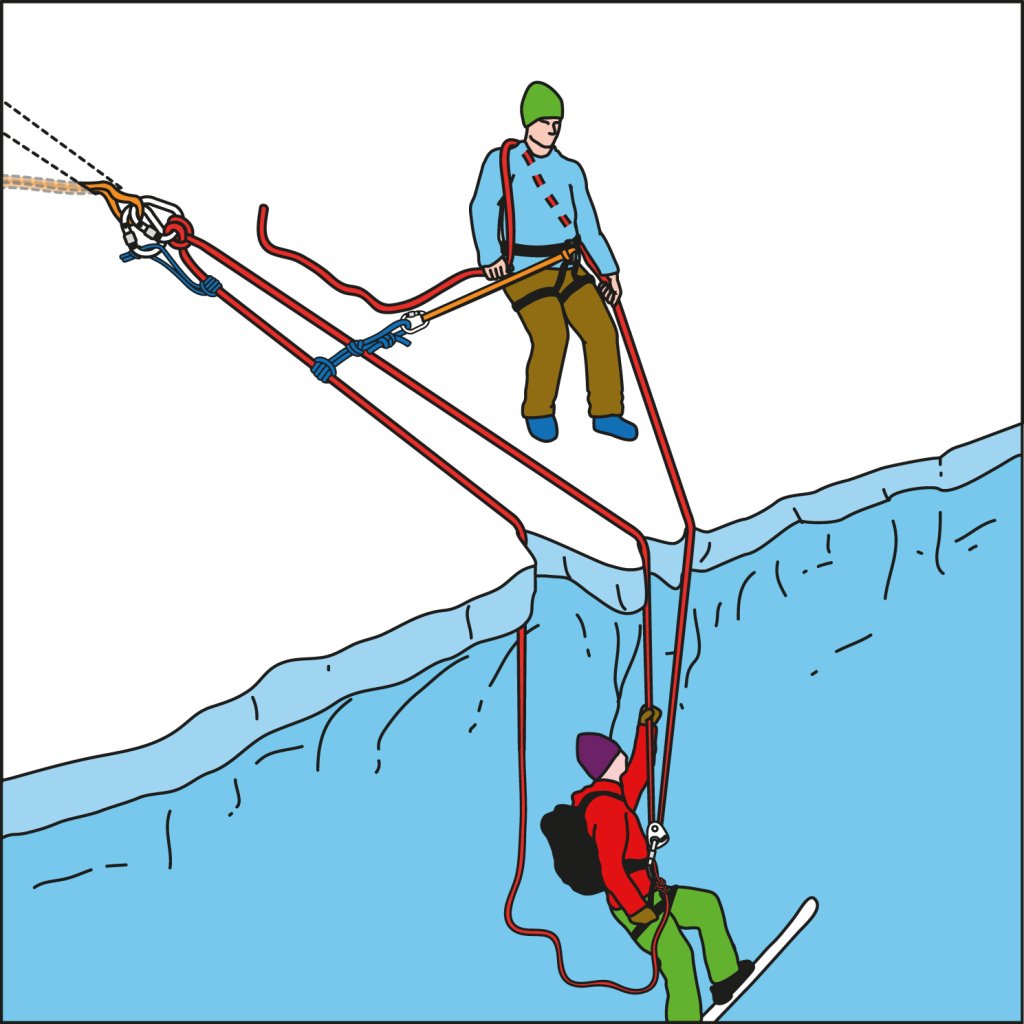Tester and test conditions
I'm 23 and have been ski touring for 5 years, but until recently I was new to alpine touring. However, I have been able to use the RescYou regularly over the last few months. I've tested it in the climbing gym, on the rock, in the shared flat, and the last few weeks also in snow and ice. Note: No crevasses were damaged during the test, the emergency was simulated as realistically as possible.
First impression
The RescYou comes in a sturdy little bag that can be attached to the harness with a mini carabiner. Unfortunately, this does not fit on every climbing harness, as the loop diameter is sometimes too large due to the plastic protection on the harness. Not so bad, it is more important to also secure the large carabiner to the harness. On the one hand, the device won't dangle so low and the risk of losing it is averted.
A small side pocket contains a water-repellent instruction manual that clearly illustrates how to use the device. The device itself is relatively light and handy. It consists of two rope clamps connected by a 6 to 1 pulley. The individual parts make a very high-quality and robust impression. Overall, the device weighs 400 grams and is therefore only slightly heavier than a set of carabiners or individual rope clamps.
The operation is fairly simple and intuitive. Everyone I gave the RescYou to try out was quickly familiar with how it works and was able to pull up someone who had fallen. If a member of the rope team falls into the crevasse, the device is ready for use very quickly, which is an advantage over conventional systems.
Crack fall! What now?
In the best case scenario, the colleague was roped up and the fall could be held. Once you have built a solid anchor, the question arises as to how to get the person who has fallen back into the daylight. With the Mammut RescYou, this is very easy. First of all, the carabiner with the first rope clamp is hooked into the sling of the anchor. Then the first rope clamp is hooked into the taut rope. By pulling out the pulley, the second rope clamp can be pushed forward on the rope and blocked. By pulling on the cord of the RescYous, the rope on which the victim is hanging can now be pulled in with ease until the clamps are at the stop again.
